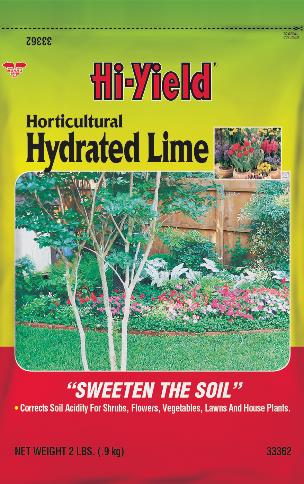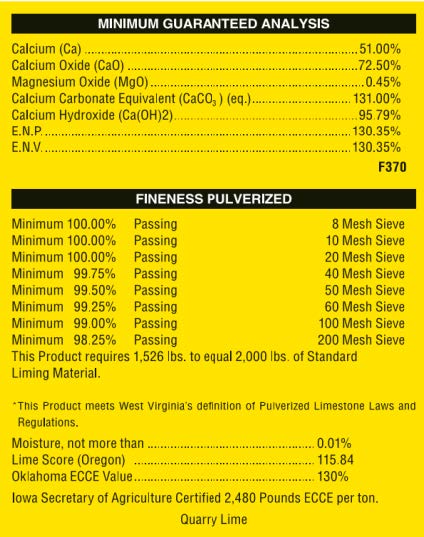Horticultural Hydrated Lime
Horticultural Hydrated Lime is used to correct acid soil conditions by raising the pH, making it more alkaline. They call this Sweetening the soil.
Sweetens the soil? What does that mean? It comes from when the settlers moved west and would stop at a site, they would test the soil by tasting it. If the soil was alkaline it would taste sweet, especially when compared to acidic soil which is sour.
Some other uses are: Reduce odor on waste areas and compost piles. Increases availability of Molybdenum and Phosphorous to plants. Increases microbial activity. Helps legumes fix Nitrogen.
Hydrated Lime is mined from a limestone quarry and crushed down to various sizes, thus the pulverized chart. This is known chemically as Ca(OH)2 Calcium Hydroxide.
Calcium (Ca) 51% – So from this bag, 51% is just Calcium, but we are not selling it as just Calcium, it’s Lime.
Calcium Oxide (CaO) 72.50% – When they heat the limestone to above 825 °C a CO2 molecule burns off leaving this, thus a higher amount. It is also known as Quicklime and has a superhigh affinity for water, helping it to absorb moisture and associated aromas.
Magnesium Oxide (MgO) 0.45% – In Hydrated Lime the low % is a good thing because it has the opposite effect of the CaO. It is not attracted to water, thus working against the benefits of the Lime. If the MgO is between 5% and 35% it would be Dolomite.
Calcium Carbonate Equivalent C.C.E. (CACO2) 131.00% – This is a comparison to pure CaCO3. Assuming CACO3 has a purity of 100%, at the same weight, the CACO2 amount would be 131%. Calcium Hydroxide (Ca(OH)2) 95.79% – This is Hydrated Lime.



